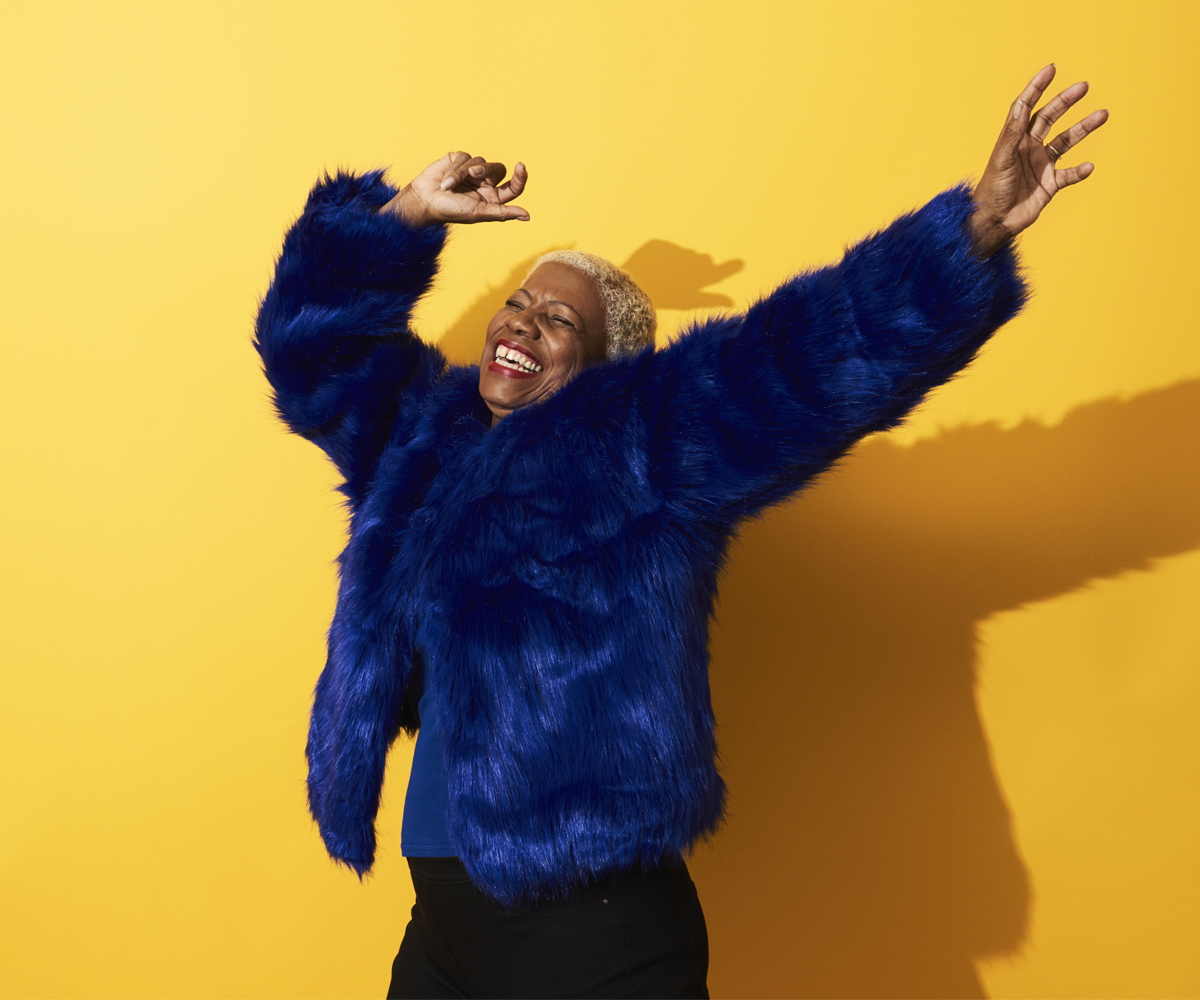Touch is our very first sense connection to the world from birth and a fundamental human need throughout our entire life span.
Yet, in this digital age it seems we’re out of touch with this vital non-verbal connection.
Whether we receive a pleasant caress, a pat on the back, a massage or just a handshake, being touched by another human being can evoke positive emotions, healing physical sensations, spiritual growth and powerful cognitive responses.
Here we look at ways we can add positive human contact back into our lives and the medicinal benefits it offers.

“Touch is a powerful form of nourishment that goes right to the core of the parts of ourselves where only that ‘silent’ language can fully express what we’re feeling,” says psychologist Cornelia Gerken.
“When this happens, the sensation we receive can play a role in putting us back on our feet in terms of trust, relaxation, deep connection and it opens us up to all the other great things that may not be visible in that moment.”
But how does the sense of touch work?
“When we’re touched, pressure receptors under that area of skin become more active and this increase in activity tells the nervous system there has been contact in a specific area of skin,” Cornelia explains.
“These signals are then processed through the nervous system and travel along the spinal column, to reach the brain, which sorts and interprets the information through its somatosensory cortex.”
In a 2009 study, researchers found that not only are we naturally wired to communicate with touch, but we are also able to send and receive additional emotional signals through tactile communication, compared to facial and vocal expressions of emotion.
In a series of studies at Indiana DePauw University, psychologist Matthew Hertenstein had volunteers attempt to communicate a list of emotions to a blindfolded stranger solely through touch.
Participants communicated eight distinct emotions – anger, fear, disgust, love, gratitude, sympathy, happiness, and sadness – with accuracy rates as high as 78 per cent.
The results suggest that touch might be important in conveying meaning that isn’t communicated through any other modality, and that it is part of the way we express our thoughts, beliefs, knowledge, desires and intentions to another person.
Touch also creates a more embodied experience.
“When we’re touched by someone who cares, our mind gravitates towards that feeling we’re experiencing, which means we get out of our own heads and drop into our bodies,” says Dr Karen Philip, counselling psychotherapist.
“As a result, most of our worries or concerns are automatically reduced or lowered.”
Cornelia agrees, touch is a great way of reconnecting us with what our bodies truly require, and in this way we can feel a deep sense of fullness that leads to spiritual benefits.
“This sense of wholeness, which comes through us, opens us up to the flow of life and it allows us to surrender to what is really beautiful within us, which can include sentiments of peace, gratitude and letting go,” she says.

Consequently, touch can help tackle a modern epidemic – loneliness.
Research from University College London showed that affectionate touch can mitigate the harmful effects of loneliness because slow, gentle touch made people feel socially bonded.
It’s a hopeful solution, considering that research has found that about half of older New Zealanders feel some level of loneliness, with eight to nine per cent feeling lonely all or most of the time.
“When we live in our heads we can feel isolated,” confirms Dr Philip.
“But, because touch is a felt sensation that represents connectedness, engaging in activities that incorporate tactile elements helps alleviate those feelings of loneliness many of us feel.
“In turn, once we’re able to connect with people who care for us this can develop into verbal communication, which can really mitigate the health consequences of loneliness,” she adds.
Take away the pain
In healthcare, research from the University of Colorado found that when people experiencing pain held hands with their romantic partner, their heart and respiration rates synched up, resulting in an an analgesic, pain-killing effect – and communicated empathy between partners, where they understood what they were feeling in a given moment.
“Such an expression of empathy is absolutely vital for human beings to thrive and exist in a more balanced way in the world, with the complexities that we face on a day-to-day basis,” explains Dr Philip.
Research from Brazil, which looked at the effectiveness of therapeutic touch involving 30 elderly patients with chronic pain, concluded that it was effective to decrease pain intensity and depressive attitudes and symptoms, as well as improve sleep quality.
Meanwhile, research in 2016 confirms that the use of therapeutic touch is a safe method in the management of physical function, pain, anxiety, and nausea in cancer patients.
Positive touch and cognitive function
“Positive touch contributes towards better cognitive function as it intentionally activates the flow of oxytocin, endorphins, serotonin and dopamine – the quartet of chemical hormones responsible for happiness and wellbeing, which are also found to act as a natural antidepressant,” explains Dr Philip.
“In turn, this reduces cortisol, the stress hormone, and initiates the parasympathetic response of the nervous system. In other words this slows down the cardiovascular stress response – lowering heart rate and blood pressure – and relaxes the activity of the digestive system or gut, also referred to as our ‘second brain’,” adds Cornelia.
Oxford University’s Center for Computational Neuroscience, used functional magnetic resonance imaging (fMRI) to look at how pleasant touch impacts our behaviour, and found that touch activates the brain’s orbitofrontal cortex – the area that processes information related to reward and decision-making.
It also triggered the vagus nerve – the main nerve controlling the body’s parasympathetic nervous system.
What are the best types of touching?
Slow, loving strokes are thought to be the most beneficial kind of touch as it has a restorative quality, has hormonal benefits, and it’s reciprocal in nature.
“When you’re kind to someone you get a reward back, therefore when you touch another with kindness, care and love, you receive the same benefits,” says Dr Philip.
While some people may perceive this as a threat resorting to what is known as tactile defensiveness – when the light touch receptors in the skin are overly sensitive, triggering a ‘fight or flight’ response – there are ways we can relearn to accept gentle positive touch or overcome fear from a traumatic experience.

Massage:
“The easiest way is in a professional setting like massage where you have the safety of being able to ask for what you want and be in control of the situation,” says Cornelia.
Research published in The Journal of Clinical Psychiatry found that massage may help treat anxiety and other mental health disorders like depression, due to its ability to reduce cortisol and anxiety symptoms.
Further 2010 research confirms that massages could boost the immune system and improve sleep.
The physical benefits include a decrease in heart rate and blood pressure, plus it helps people bond and improves overall emotional wellbeing.
Hugs:
Touch in a non-sexual way, such as a hug, is another great way to receive comfort and connection.
Virginia Satir, a family therapist once famously said, “We need four hugs a day for survival. We need eight hugs a day for maintenance. We need 12 hugs a day for growth.”
Research, in PLOS One found how the gesture seemed to increase positive feelings and reduce negative ones on days when people experienced relationship problems.
Other research found that hugging reduces the chance that a person will get sick.
Pets:

Pets keep loneliness at bay and rev up your mood.
According to a 2017 study, for people who lived alone, owning a dog decreased their risk of death by 33 per cent and their risk of cardiovascular-related death by 36 per cent, compared to single people without a pet.
The chances of having a heart attack were also 11 per cent lower. Other studies confirm how petting a dog for 18 minutes boosts immune function and eases stress and loneliness for seniors.
Therapy dogs have been shown to ease stress, loneliness and depression in kids and adults fighting cancer.




.jpg)